All about green radish
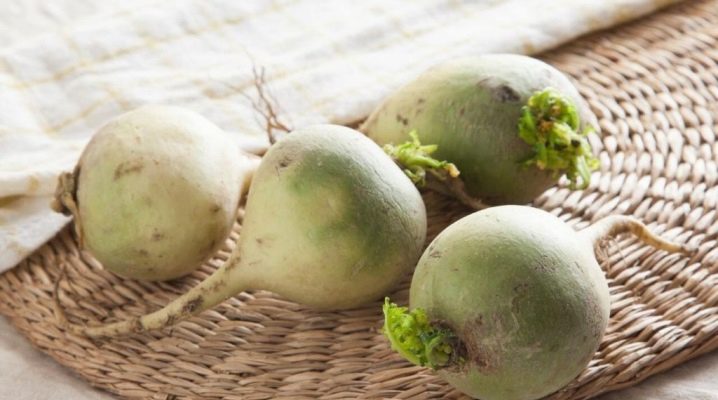
Green radish is a plant that is very easy to grow in your area. Such a vegetable is suitable even for novice gardeners, because problems with its cultivation usually do not arise.
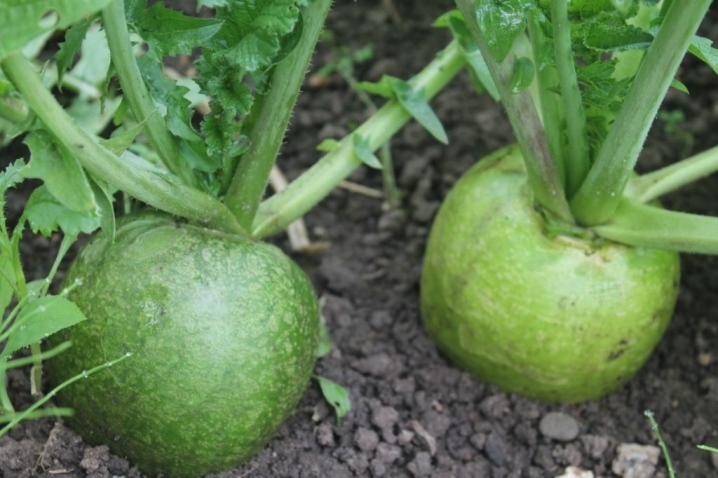
general description
A plant called green radish has been found naturally in eastern countries. Immediately after its appearance in Russia, this root crop won the love of local gardeners. It is appreciated for its pleasant taste, good composition and ease of care.
There are different types of green radish. Its fruits are both elongated and round. Their flesh color is usually white or light green.
The fruits are of good keeping quality. In addition, they can be safely transported from place to place.


Comparison with black radish
Green radish is a "relative" of black radish, therefore, in many respects, these plants are similar to each other. These plants differ primarily in their appearance. Green radish is lighter, black - dark. You can also distinguish these fruits by their taste. In green radish it is soft, in black it is bitter and spicy. For this reason, green-fleshed fruits are more commonly used in cooking.
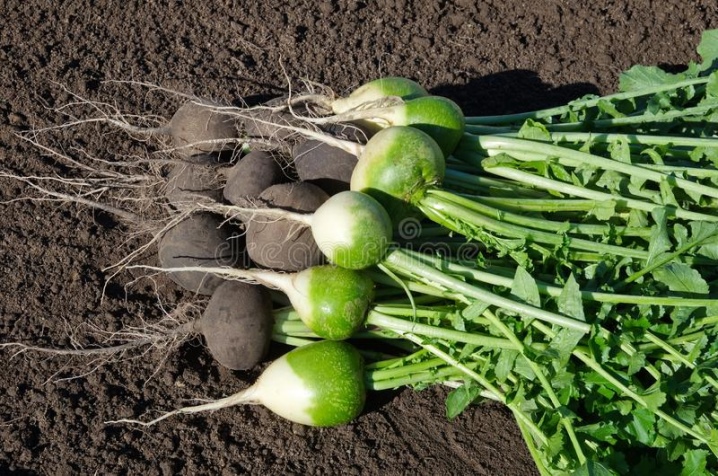
Popular varieties
There are now quite a few different varieties of radish. When choosing plants for your site, you should pay attention to the most popular of them.
-
"Green Goddess". This is an early ripe radish variety. It was withdrawn recently. The fruits of such a radish have a neat round shape and a light color. Their flesh is tender. The fruits are stored for a long time, so it is profitable to grow them on your site.
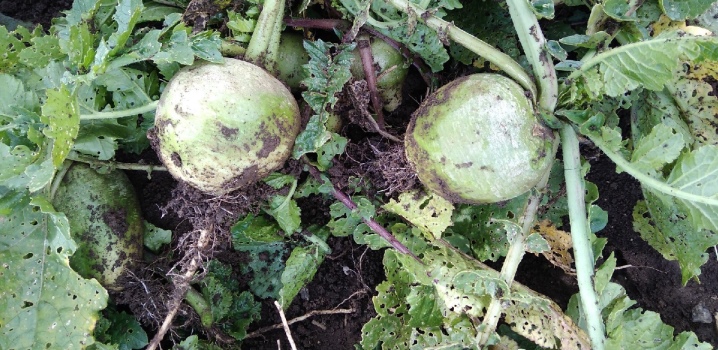
- "Yuzhanka"... This radish variety has a high yield. The fruits ripen quite early. Their shape is oval. Each root vegetable weighs about 250 grams.
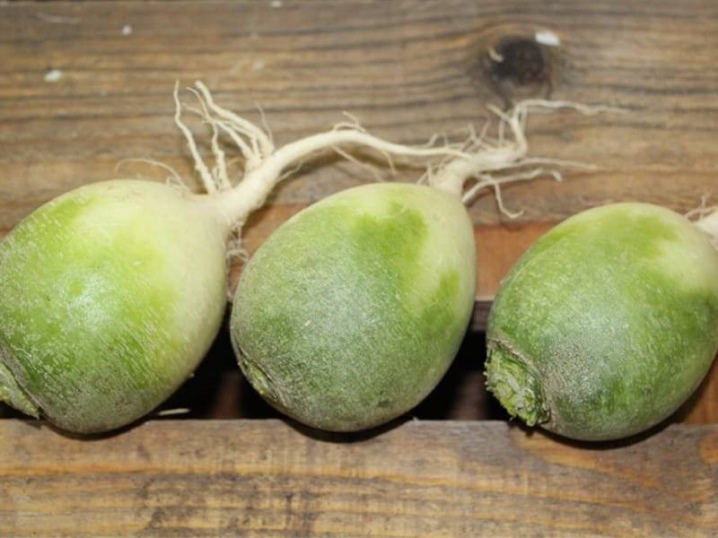
- "Severyanka". The fruits of such a radish develop within two months after planting. Their shape is round. The taste is slightly spicy. The fruits are large in size. Each of them can weigh between 400 and 700 grams.

- Lobo. This variety is mid-season. Chinese radish can be either round or elongated. The fruits are large and bright. Their color can be not only green, but also pink or purple. There is no bitterness in their taste, so this radish is often used to prepare various dishes.

- "Pink Ring". The fruits of such a radish have an oval shape and a light green rind. Their flesh is also light. A distinctive feature of such fruits is that if you cut the radish, you can see red rings at the cut points.
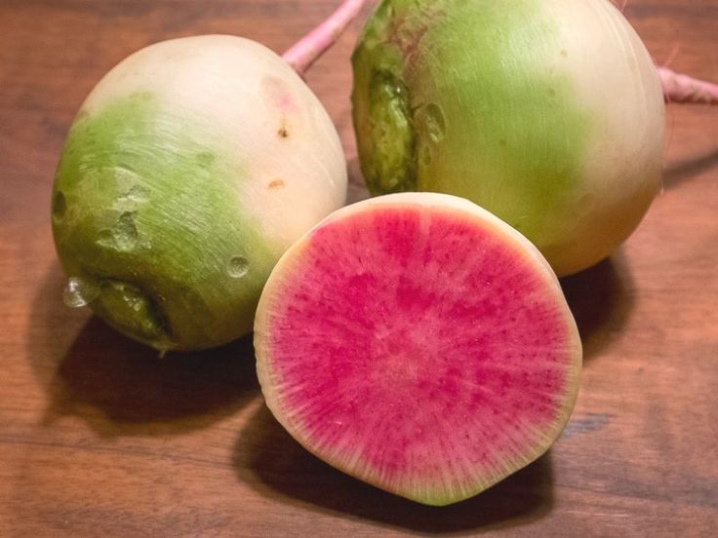
- "Troyandova". This type of radish belongs to late ripening. The fruit ripening process takes almost three months. Their shape is oval. The weight is quite heavy. Several kilograms of fruit can be harvested from one square meter of land.
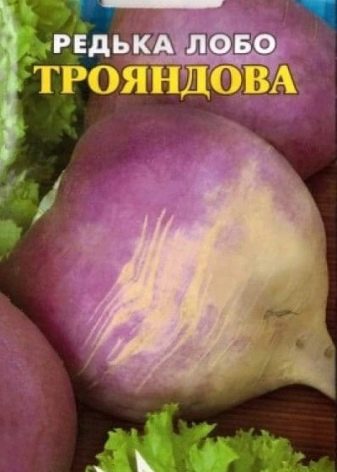
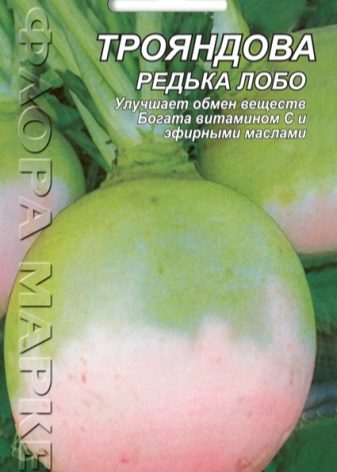
All of these varieties are fairly easy to find commercially.
Landing
Growing green radish on your property is quite simple. All you need to do is follow the simple step-by-step instructions.
Preparation
Before planting the radish on the site, you need to prepare both the seed and the beds themselves. First you need to choose a suitable place for planting these plants. It should be well lit. If the radish gets enough light, it will taste good.
The root crop is quite unpretentious, so it can be planted on any soil... If the soil is too acidic, before planting the seeds, it must be deoxidized using dolomite flour or dry wood ash.Before digging a site with clay soil, it can be fertilized with peat or well-rotted compost.
When planting green radish on your site, it is important to remember about crop rotation. As a rule, this root vegetable is planted after cucumbers, nightshades, as well as after onions and garlic. Planting radish in the same place for many years in a row is not worth it. This will lead to the impoverishment of the soil. In addition, it is not recommended to be planted after cabbage or corn.
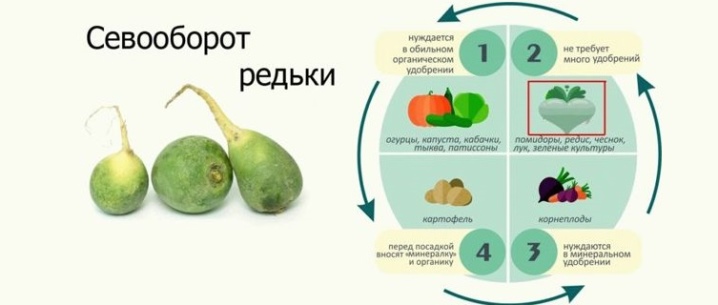
Having chosen a suitable place for planting green radish, you need to start preparing the seeds. This process consists of several steps.
-
Calibration... First you need to examine the seeds. Planting material up to 3-4 years old is suitable for planting. Grains that have been stored for longer are best just thrown away. Choosing large seeds for planting is worth it. It is best that they are the same size. In this case, seedlings will appear at about the same time.
-
Seed quality check... The planting material should be placed in a glass of saline solution. Seeds that float should be thrown away. The rest should be well rinsed and dried.
-
Treatment... To increase germination, seeds can be additionally treated with a growth stimulant. This is usually done the day before sowing. In the process, you need to follow the instructions on the package. After processing the planting material, it must be well dried.
It is very important to sow seeds at the right time.... In central Russia, this is best done in early May. In cold regions, sowing is postponed for a couple of weeks. The weather forecast also plays an important role.
Before planting seeds, you need to make sure that there will be no return frosts this year.

Sowing technology
Before planting the radish, the soil must be dug up, breaking up large lumps of earth. In the process, you need to remove all weeds and weak root growth. After that, you can start planting a green radish. This process consists of several main stages.
-
To begin with, you need to make several identical furrows in the garden. The distance between them must be at least 30 centimeters. The furrows themselves should not be made too deep. Their optimum depth is 2-3 centimeters.
-
Next, the beds must be watered abundantly.... It is best to keep it warm. After watering, you need to wait a little so that the moisture is absorbed into the soil.
-
After that, you need to put seeds in the grooves.... The distance between them should be within 10 centimeters. In this case, adult plants will have enough nutrients. It is worth planting radish, given its varietal characteristics.
-
Next, the grooves need to be covered with soil. and it is good to mulch with peat or humus.
If the seeds were soaked before sowing, seedlings will appear in a couple of days. To speed up the sprouting process, water the beds with warm water, and then cover with a transparent film. In such conditions, seedlings will be able to survive even small return frosts.
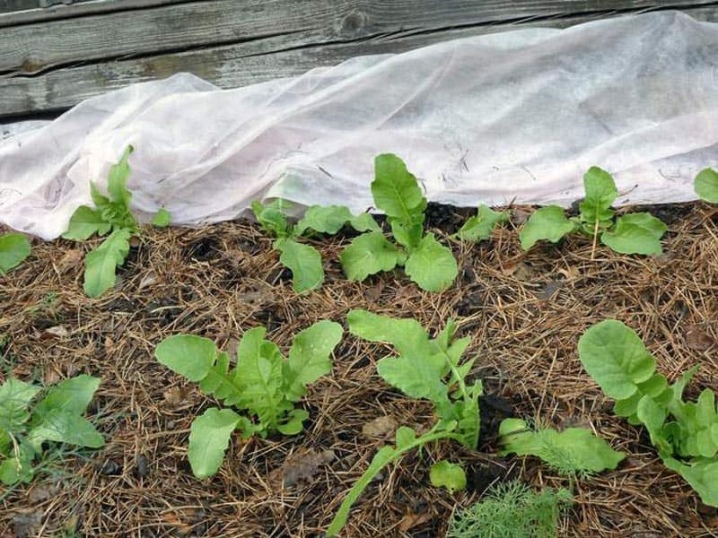
Care
To grow a large and tasty green radish on your site, the plants need to be properly cared for after planting. You need to pay attention to the following agrotechnical measures.
-
Watering... Since the radish is very fond of water, it is recommended to water it abundantly. This is especially important on hot days. Due to the lack of water, the roots become rough and tasteless. In addition, their skins begin to crack. To spend less time watering the site, it is recommended to mulch the soil. For this purpose, you can use dry grass, peat or sawdust. It is important to place the mulch not too close to the tops.
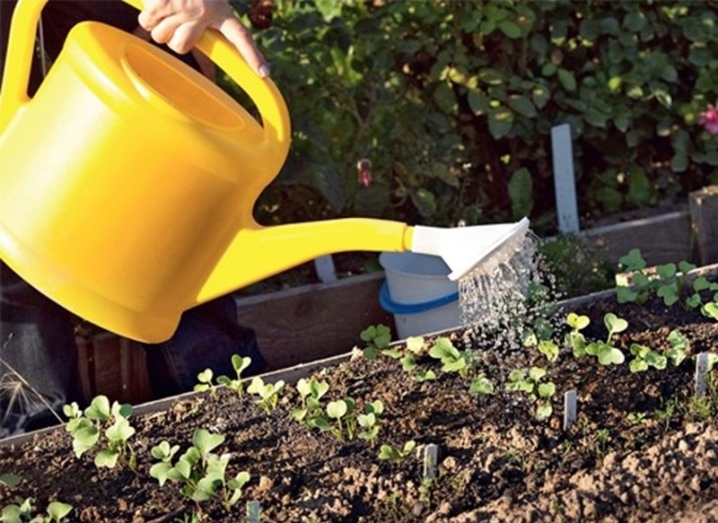
- Thinning... If the gardener added too many seeds to the holes, the beds will need to be thinned out in the future. This must be done in the right way. For the first time, young seedlings are removed after the first green leaves appear on the beds. You need to remove the weakest plants that develop very slowly.The second time, the beds are thinned out at the stage of root crop formation. At this point, any pale plants with weak foliage are also removed. The third time, the sprouts are removed after the roots grow a little. As a result, only one strong plant should remain in each hole. You need to thin out green spaces very carefully, trying not to hurt the shoots that remain in the ground.
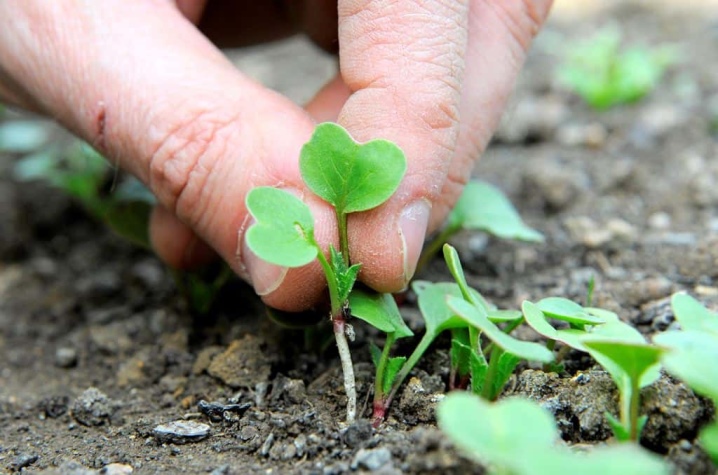
- Loosening... A dense crust should not form in the area with green radish. Therefore, the beds need to be loosened from time to time. In this case, air and moisture will flow to the roots. When the roots grow up a little, they will need to be hilled. This is done so that the upper part of the plants does not become coarse. It is also necessary to loosen the soil in the aisles. The main thing is not to damage the roots of the radish in the process. All weeds must also be removed during weeding. They can be lightly dried and used as mulch or added to the compost pit.
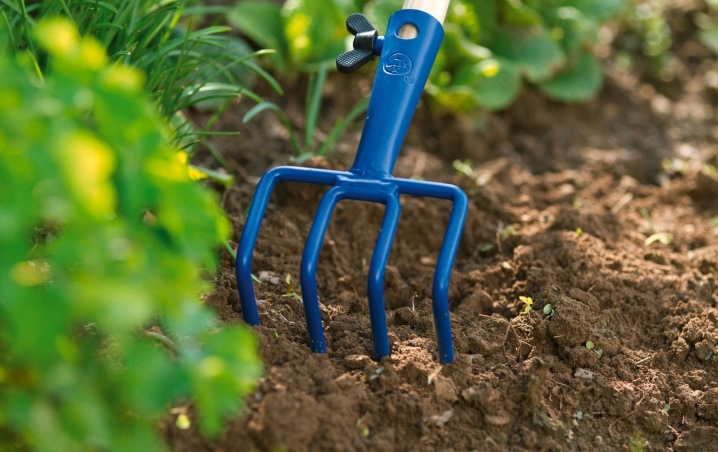
- Cutting the tops... In order for plants to have enough nutrients for normal development, it is very important to remove dried foliage in a timely manner. This process is usually combined with a loosening procedure.
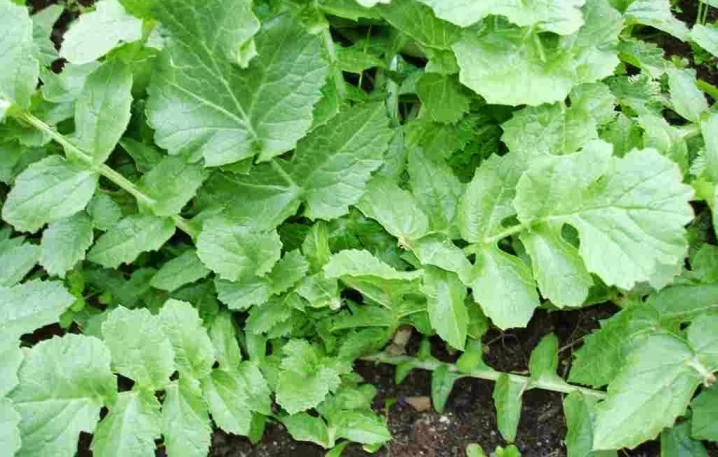
- Top dressing... Regular feeding will also help to increase the yield of the radish. Typically, these plants are fertilized twice a season. For the first time, fertilizing is applied after the first thinning of the beds. Dry wood ash is usually used at this time. It is worth using only clean ash without any impurities. The second time the plants are fertilized after the start of fruit ripening. At this time, gardeners usually use mineral fertilizers diluted in warm water. The third dressing may be needed for plants grown outdoors only if they are poorly developed and seem too weak.
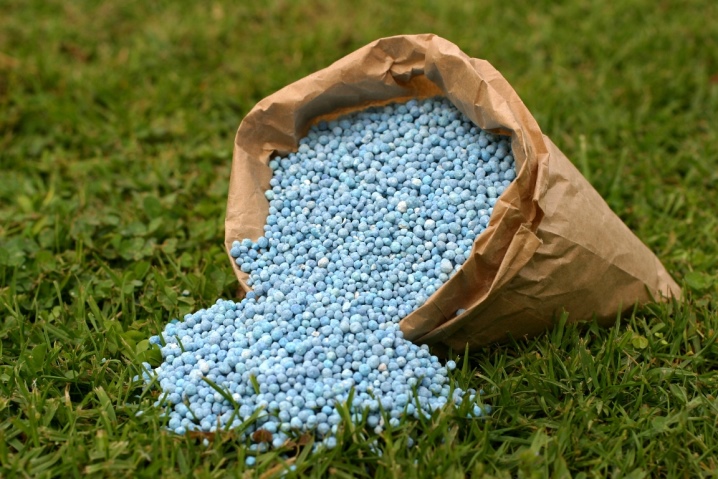
Timely use of dressings can significantly improve the quality of the grown crop, as well as its keeping quality.
Diseases and pests
The following diseases are dangerous for green radish.
-
Gray rot. This is a common fungal disease that poses a danger to radishes. You can identify diseased plants by noticing a gray fluffy bloom on them. For the treatment of plants, agents with glyocladium are usually used.
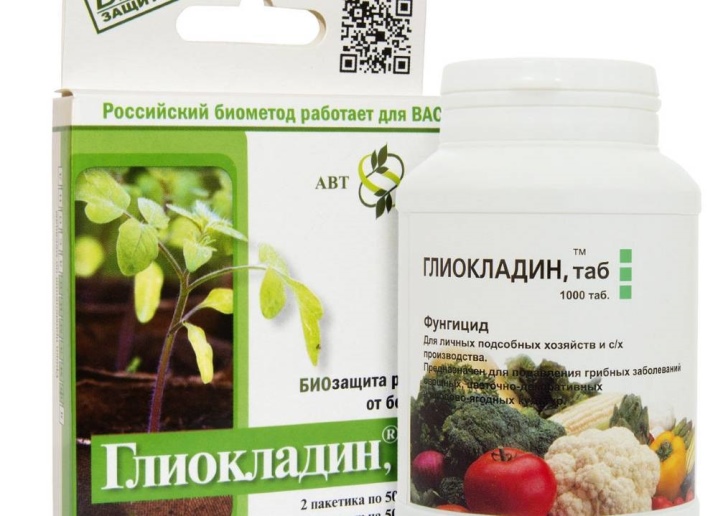
- Powdery mildew. This disease also poses a danger to green radish. Diseased plants are covered with a dense gray-white bloom. Because of this, the radish develops much more slowly. In order to prevent contamination of your site, it must be treated with Bordeaux liquid in autumn and spring. It is also important to follow the rules of crop rotation.
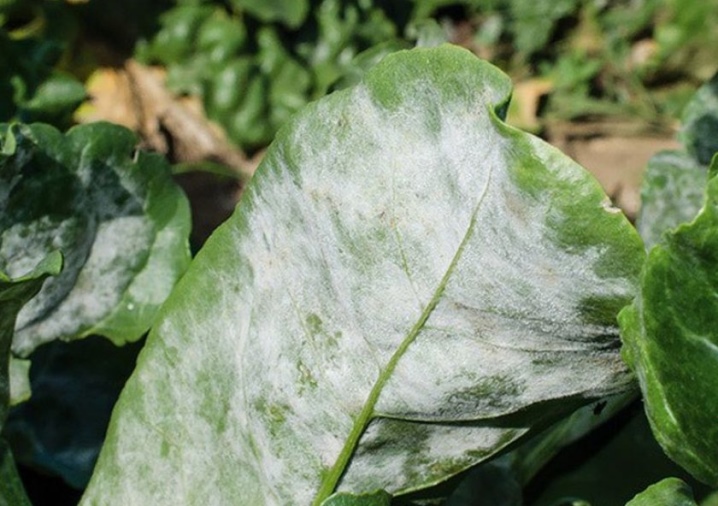
- Blackleg... This disease usually develops when the roots are in too moist soil. The lower part of the stem of the diseased plant turns black. To prevent the development of the disease, the soil must be treated with Bordeaux liquid and sprinkled with a small amount of ash. It is also important to regularly thin out the rows of radish.
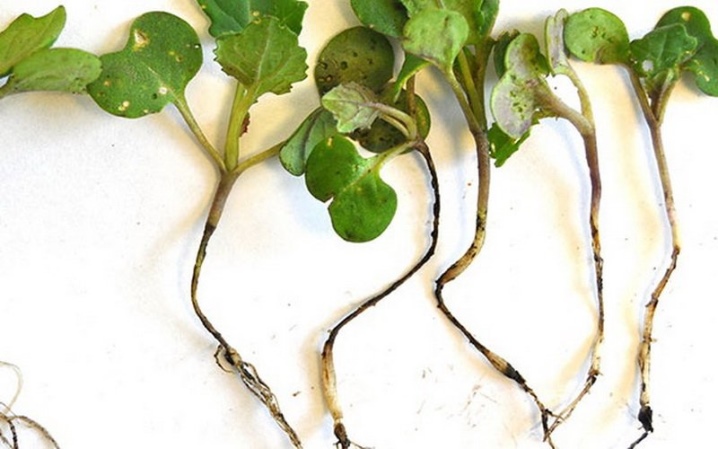
- Mosaic... Dark mosaic spots appear on the leaves of diseased plants. They grow over time. It is impossible to cure mosaic spotting. Therefore, all infected plants must be carefully removed from the site and burned.
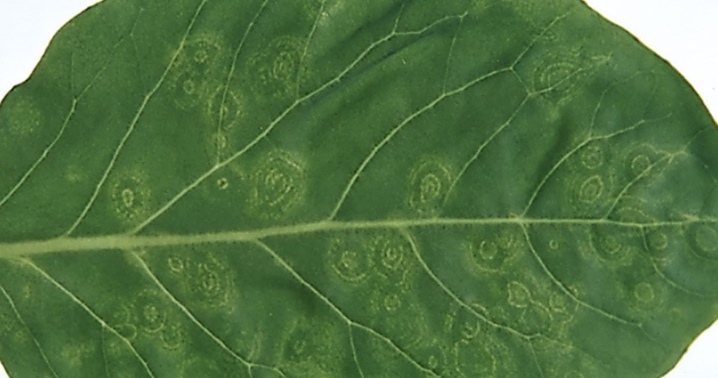
All sorts of pests can also harm plantings. The danger to plants is represented by cabbage flies, which damage not only foliage, but also root crops. To get rid of this pest, all infected fruits must be dug up and burned. After that, the site should be treated with any insecticide.
Protecting green radish is also worth it from slugs.... They damage the tops, as well as the parts of the root crops protruding above the surface. It is worth collecting slugs manually.
It is also worth scattering powdered eggshells or lime between the rows and between individual bushes. You need to pour it in a thick layer.

Harvesting and storage
The harvest time depends on the varietal characteristics of the green radish. Early varieties are harvested in June. Moreover, such fruits have a very short shelf life.Therefore, it is recommended to eat them in the near future. Mid-season varieties are harvested in late summer, winter ones - in autumn.
Harvesting should be done in dry weather. It is best to do this in the morning. If the soil is light and loose, you don't have to dig up the radish. It will be enough to pull it out of the ground, gently holding the fruits by the base. If this is not easy to do, the radish will have to be carefully dug up.
After that, the fruits must be cleaned of dirt and dried in the sun. If the weather is rainy, it is best to store the radish under a shed or in a well-ventilated area. The dried radish must be peeled from the tops. In this case, you do not need to cut it off completely. Small tails about three centimeters long should remain on the fruits.
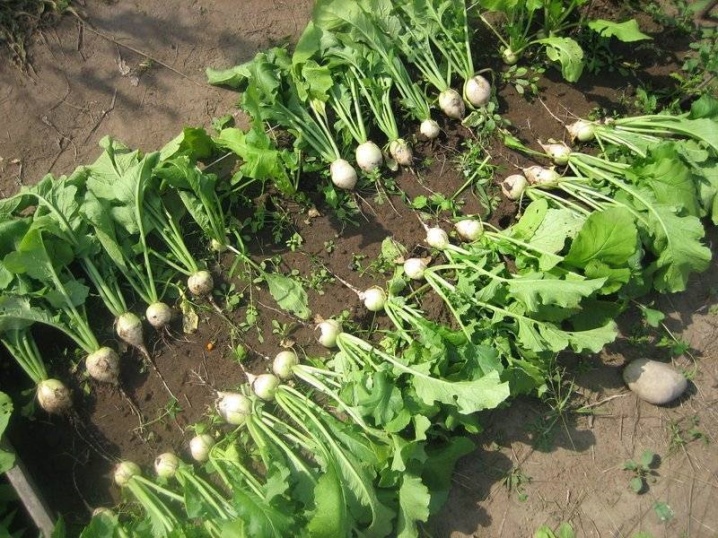
The fruits prepared in this way can be immediately sent for storage.
You can store your crops in sturdy plastic bags or wooden boxes. In order for the fruits to last longer, they need to be sprinkled with sand or dry sawdust.
It is worth storing green radish in a room with low temperatures and high levels of humidity. This can be a glazed balcony, basement or storage room. A small amount of fruit can be stored in the refrigerator. Radish is usually placed in the vegetable compartment, pre-packed in bags with small holes or wrapped in parchment.
To increase the shelf life of fruits, only healthy roots should be sent to the cellar or to the balcony. They must be free of any signs of rot, mold or any other damage. In this case, they will be able to lie for quite a long time without becoming less tasty or healthy.
If you do everything right, the plants on the site will develop very well. Therefore, even owners of small plots will be able to get a good harvest.
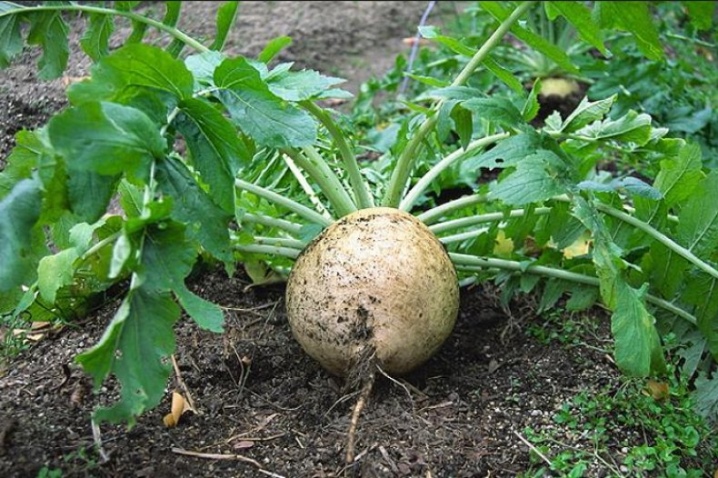













The comment was sent successfully.